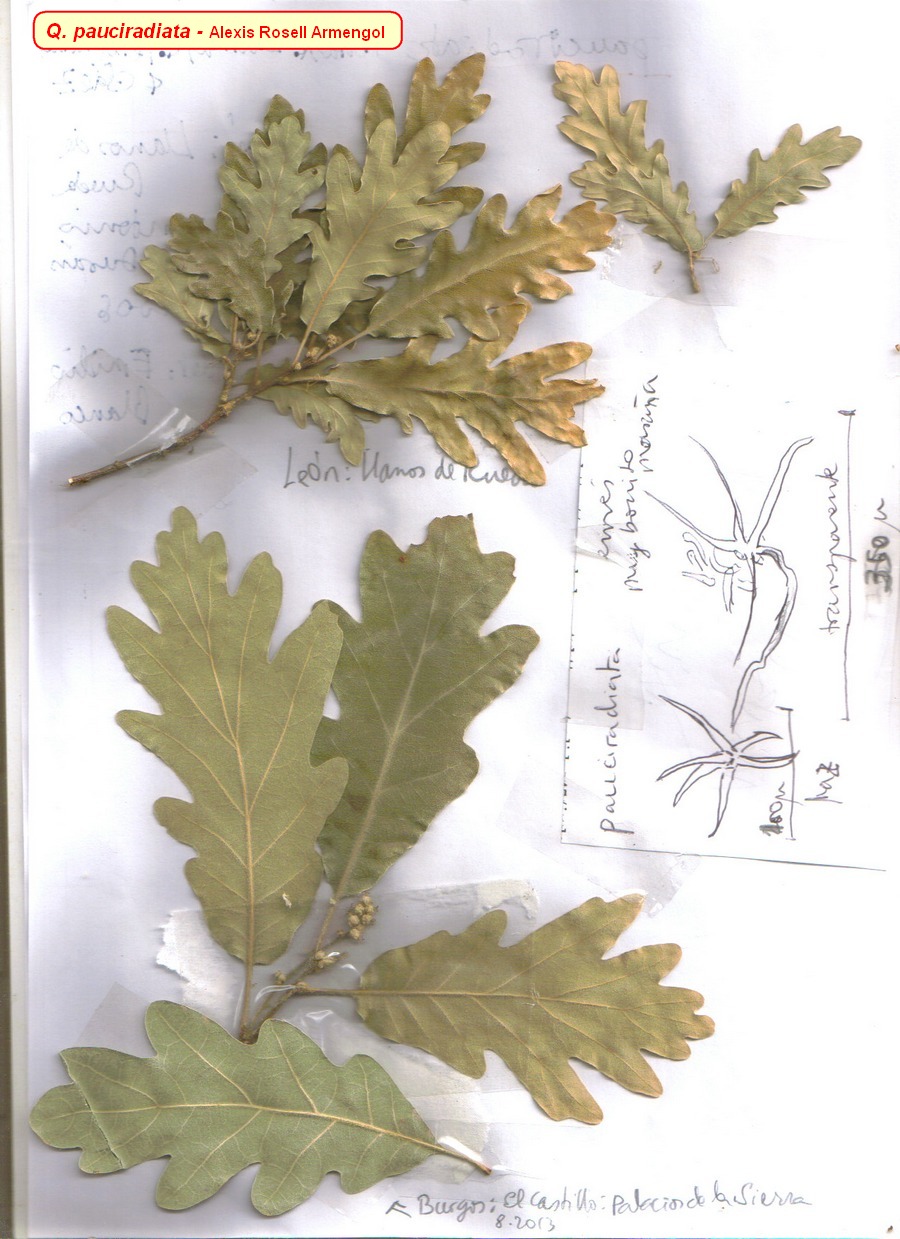| Quercus pauciradiata | |
| Author | A.Penas, Llamas, Pérez Morales & Acedo 1997 Bot. Helv. 107: 75 |
| Synonyms | |
| Local names | |
| Range | North
of Spain (Cantabriques Mounts in Leon); 900-1300 m; |
| Growth habit | to 10 m ; |
| Leaves | 7-11
x 4-7 vm; marcescent, papery ; base not auricled, margin lobate to pinnate
; light green above with stipitate fascicled hairs (stalk 8-20 µm
and 2-4 rays 150-300 µm), some simple and some bulbous ones; glaucous
beneath, with the same types of trichomes as adaxially but more abundant,
plus some simple uniseriate, scattered hairs and simple hairs on veins
; 4-7 pairs of secondary veins; petiole 1-2 cm long, sulcate, tomentose
with the same types of trichomes as on the blade, et bulbous hairs becoming
rare; leaves appear 3 weeks before those of Q.pyrenaica; |
| Flowers | May - June ; numerous male catkins ; rare female flowers; acorn distorted, very often sterile; |
| Fruits | |
|
Bark, twigs and |
bark fissured; branchlets densely pubescent at first, then glabrescent, with simple and bulbous hairs. |
| Hardiness zone, habitat | mixed with Q.pyrenaica; |
| Miscellaneous | --
Very rare, threatened species (only 3 populations, in a 5 km2 area); -- This taxon is different from Q. pyrenaica which has leaves later, fasciculate stalks 40-60 µm, |
| Subspecies and varieties |
|
| Pictures |  |